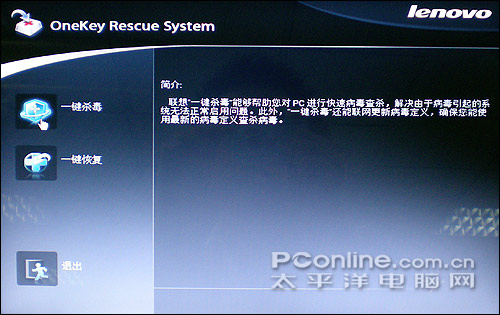Onekey Recovery 70 Engineering

I have a new Lenovo E540 which has the special keys like volume change and such on the F-Keys. So to actually use the F-Keys the FN has to be pressed to, so when using Alt+ F4 I have to press Alt+ Fn+ F4 which is very inconvenient. In the BIOS it is possible to swap the FN and Ctrl Keys so the F-Keys are primary again but then the functionality of the Fn and Ctrl Key are really swapped!
Sep 1, 2011 - The primary recovery of recombinant proteins secreted into the culture. From 70–90%), while host cell proteins are typically reduced by 35–45%. In the product as one key criterion when choosing the administration route. OneKey Recovery, the recovery partition and Windows 10. In my laptop's (Z50-70) manual on page 26. It says: 'If Windows cannot be started. OneKey Recovery #1 is installed within the hidden recovery partition that is responsible for performing a system restore from the image of your choosing - either the factory image or a custom.
Is there probably a solution where the functionality of the FN and Ctrl key remain and the F-Keys are primary?
TL;DR - As OneKey Recovery doesn't exist in Windows 10, can I still recover to the factory Windows 8.1 image? What would pressing 'Reset this PC' do in a Windows 10 that was upgraded from 8.1 - restore to factory Windows 8.1 or a clean Windows 10? And what would pressing 'Reset this PC' do in a clean Windows 10 install - restore to factory Windows 8.1 or a clean Windows 10? In any scenario, is the factory recovery partition ever completely redundant? Or is there always a way to restore to the factory 8.1 installation, regardless of whether the OneKey recovery software is installed on Windows or not? Lenovo state in their that the OneKey Recovery software will not be functional in Windows 10 and should be uninstalled before the upgrade.
I've struggled to find any information regarding the implications this has on the correct way to perform a recovery if something terrible happens, and I have a few questions. In my laptop's (Z50-70) on page 26. Boujou 502 crack download. It says: 'If Windows cannot be started: • Shut Down the computer • Press the Novo button. From the Novo button menu, select the Lenovo OneKey Recovery System and press enter.' So am I right in thinking that after upgrading to Windows 10, even though the OneKey Recovery software won't be installed, when the computer is shut down I could still press the novo button to launch into the OneKey Recovery System via the BIOS?
In other words, there's an implementation of OneKey Recovery baked into the BIOS somehow that doesn't require Windows to run, and allows you to restore from the factory image (i.e. Windows 8.1 that came pre-installed on the laptop)? Windows 10 has a 'Reset this PC' option. After upgrading to Windows 10 what exactly will choosing this option do? Will this pick up on Lenovo's recovery partition and recover the system back to Factory Windows 8.1? Or will it perform a clean installation of Windows 10? If 'Reset this PC' will reset it to the factory Windows 8.1 image, and my answer to question 1 is yes, then I think that means there's actually two ways to get back to the factory Windows 8.1 - either by shutting down and pressing the novo button, or by using 'Reset this PC' in Windows 10.
But then, how do I perform a clean install of Windows 10? Is the only option for a clean Windows 10 install to boot from a bootable media containing the Windows 10 ISO and install that way? If 'Reset this PC' will reset to a clean Windows 10, what are the differences between resetting this way, and doing a full clean install using a bootable media containing the Windows 10 ISO? Or are they exactly the same? If I upgrade (checking that Windows 10 has activated successfully), and then proceed to format the system partition and do a clean install using a bootable media containing the Windows 10 ISO (which according to everything I've read is allowed, and the clean install should activate automatically), would this have any implications on recovery?
What would pressing Windows 10's 'Reset this PC' option do then? Factory Windows 8.1 or Windows 10? Would the novo button still work and pick up the BIOS versions on OneKey Recovery? Or would the recovery partition now be redundant as nothing can access it? Any clarification on any of this would be much appreciated - I want to fully understand the whole recovery process within Windows 10 before I upgrade.
Update for anyone else reading: I just uninstalled OneKey recovery on my Windows 8.1 installation, in preparation for the upgrade. So as far as Windows is concerned, OneKey Recovery has been completely removed.

The good news is that I then shut down the laptop, pressed the novo button, selected 'System Recovery' and I was still greeted with the OneKey recovery program where I could choose to restore from factory image, or a custom image. Therefore I assume that once I've upgraded to Windows 10, I will always have the option to restore to factory Windows 8.1 if I ever need/want to. The confusion seems to be that the OneKey recovery software is actually two separate softwares: • OneKey Recovery #1 is installed within the hidden recovery partition that is responsible for performing a system restore from the image of your choosing - either the factory image or a custom image created by OneKey recovery software #2. OneKey Recovery software #1 is always accessible via the Novo button.